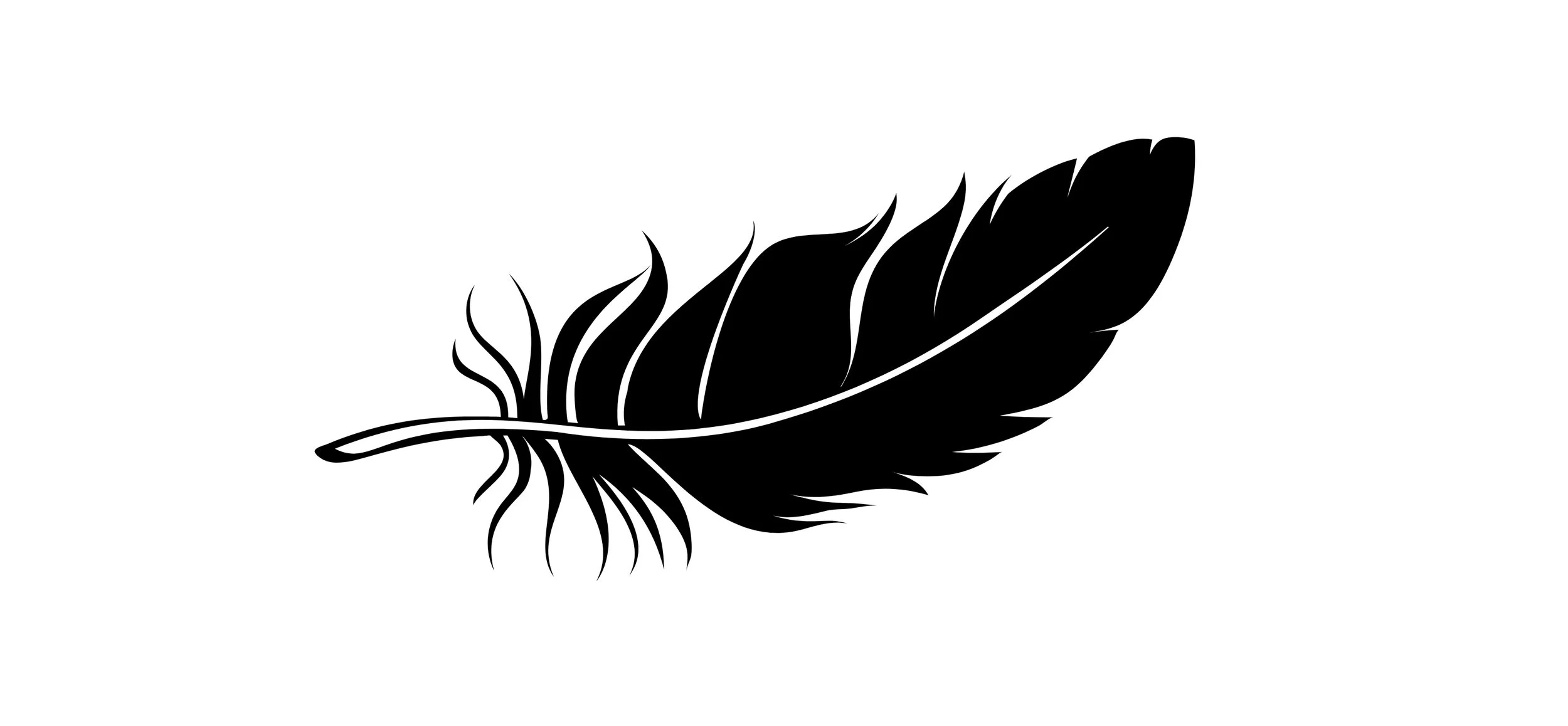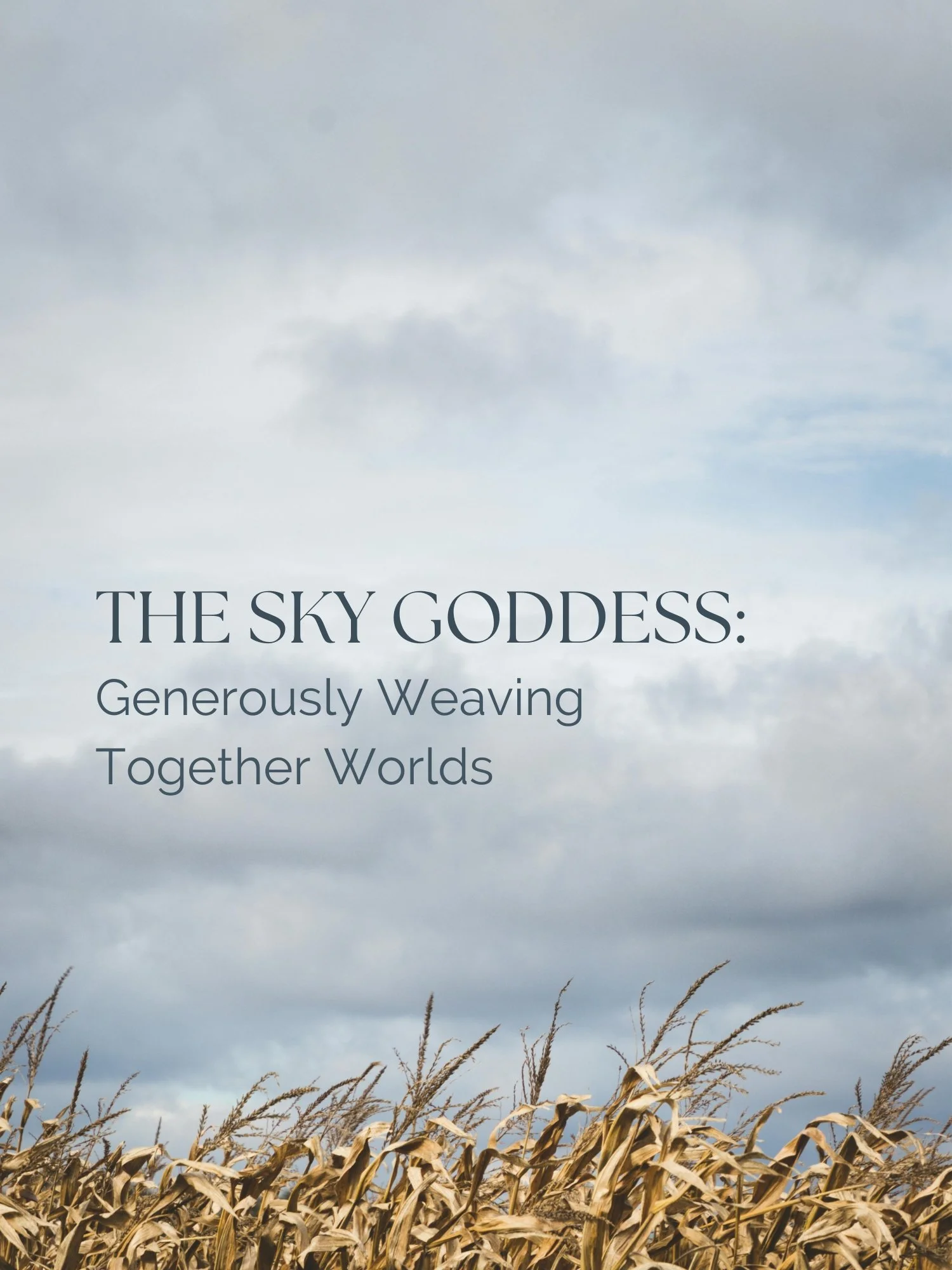In these shadowed and fractured times, when the world seems cleaved in two, and the discord of one realm rises against another, we must remember the Sacred Seamstress who eternally weaves worlds back into belonging. She appears as Na'ashjé'ii Asdzáá, Spider Grandmother of the Navajo, tending the threads of life and story; or as Amaterasu Omikami, the Japanese Shinto sun goddess, linking heaven and humanity through her radiant loom; or as Neith, the primordial Egyptian weaver, poised at the threshold between chaos and order; and as the Valkyries of Norse legend, threading human destinies into the larger tapestry of fate. This Sacred Seamstress comes in a thousand forms across the world and bears just as many names, but in essence she is the Weaver of Divided Worlds, the Threshold-Keeper, the Mediatrix of the in-between. It is she who braids the broken back into belonging, weaves what is wounded into what is whole, interlaces the lost and the living into a shared tapestry.
Perhaps she awaits within you?
The Sacred Seamstress sits in the deepest corners of our collective memory, and in the depths of our soul’s remembering, all she needs is for us to awaken her spirit within ourselves, and she will weave her sacred magic to heal the rifts of our time. Now is the time to call her forth, and she will rise; nourish her, and she will flourish. Let us attune ourselves to a few of her many faces, for each carries a thread of sacred wisdom that can guide our own hearts, and together these threads can help us weave a luminous web that holds our world—and ourselves—in balance.
The Lover of the Other (Dragon and Crane)
The Sacred Seamstress dares to love across difference, to thread together worlds that seem impossible to reconcile. In the Vietnamese myth of the Dragon and Crane, land-born and sea-born, feather and scale, meet like two fibers drawn from distant fields laid together on the loom of creation. Their union, a shared nest of a hundred shimmering eggs, is an ecotone where realms entwine and a new fabric is spun into being, borne of blended fibers.
The Sacred Seamstress shows us that when such distinct fibers cross and clasp, they do not diminish one another; they deepen the weave. Just as flax and hemp, ramie and cotton—plants that root in different soils and hold different strengths—can be retted, combed, and joined into a single cloth, so too do Dragon and Crane intertwine their gifts. In a dual-fiber cloth, what one plant lacks the other provides: flax lends its cool sheen and smoothness, while hemp brings an earthy durability and tensile strength. Together they create a cloth with a weight and resilience that neither plant could achieve alone - strong enough for sails yet supple enough for garments, wrapping future generations in a gentler world than the one they might have known, shielding them from the cold divisions that once ruled. The Sacred Seamstress shows that by joining our distinct threads with care, we can craft a cloth strong enough to hold us all.
The Seer of Two Sides (Athena and her daemon Owl)
The Sacred Seamstress draws her power from perceiving from two perspectives woven into one clear seeing. Athena, the Greek goddess of weaving and warfare embodies this gift of twin visions. In her story, a little owl comes to roost upon Athena’s blind side carrying the wisdom of the night; and in that companionship, day and night-sight stitch themselves into a vision wide enough for both worlds. The story of Athena and her daemon Owl shows us that deep insight arises when the warp and weft of two complementary visions are woven together into a larger, more expansive fabric of understanding.
It is said the owl was once a young princess named Nyctimene who fled into the forest cloaked in silence and shame. Athena did not scorn or turn away from Nyctimene’s wounding; she offered Nyctimene refuge, tenderness, honored her pain, and granted the owl a rightful place on her shoulder, a daemon holding the shadows of the world. Wisdom, the Sacred Seamstress teaches, is not born from denying our shadows nor from worshipping them—it arises from holding both in sacred balance. Some of us give our entire weight to the wound and sink beneath it; others cling only to the lesson, the gift, but forget the weight of the ache that shaped it. But just as a weaver must keep warp and weft in equal tension lest the cloth warp, buckle, or thin, the Sacred Seamstress shows us that our wisdom must be forged from a balance between these things. When we honor both the wound and the wisdom it bears, our vision becomes a sacred weave—a living fabric that shields us on our journey, enfolds us in comfort, sustains us through challenges, and guides us gently through life’s mysteries.
The Weaver of Strangers and Kin (Sky Woman)
The Sacred Seamstress knits strangers and kin into a single living world. Sky Woman, the Haudenosaunee Creation Mother, fell from the heavens, and the birds rose to catch her, bearing her safely to Turtle’s back. Grateful for the life she had been spared, she sowed the seeds she carried from the Sky World, creating the fabric of the world not for herself alone, but for all beings to come. Her wisdom is the wisdom of interdependent mutual care, stitches of reciprocity that sew together sky and earth into one sacred world, strangers into kin. Her story—animals rising to save her, and she sowing life in gratitude—teaches that a world out of balance is healed only by tending the sacred web of all beings.
Though the weaving of baskets from sweetgrass and black ash in the Mohawk tradition—described so beautifully by Robin Wall Kimmerer in her book Braiding Sweetgrass—our understanding of the Sacred Seamstress deepens. It is the rhythmic back and forth of the weave, the interchange of sweetgrass and black ash that echoes the give and take of reciprocity binding sky and earth, human and wild into a living basket that holds the world together. The Sacred Seamstress shows us that creation never happens just once; it is a continuous weaving of mutual care, and each one of us is meant to have a place at the seat of this sacred loom.
Kimmerer speaks of weaving science, Indigenous wisdom, and the plant’s own teachings into a three-stranded braid—a way of three-part knowing that restores relationship between those who arrived from the sky and those rooted in the earth, between newcomer and original inhabitant, bringing harmony to the knowledge carried from the perspectives of the newly arrived and the long-rooted, just as surely as the harvest and weaving of sweetgrass restores kinship with the land. When we tend these three relationships as a basket of sweetgrass and black ash is woven we restore our fabric of interwoven belonging.
The Threshold Queen of Sorrow and Power (The Selkie)
The Sacred Seamstress takes the sorrow of what we lose, and the strength we gain through hardship, and weaves them together on her sacred loom into a more authentic becoming. The Celtic Selkie, that ancient shapeshifter of sea and shore, has her seal-skin stolen, binding her to the human world. Her story shows how grief can flow through the heart when belonging is forged through betrayal. Yet she teaches that sorrow is not weight to be shed, but a deep, vital current from which strength, wisdom, and authentic belonging rise. Her grief becomes her salt—concentrated, essential—sharpening her into someone more whole, truer, and wiser than before.
Her tale is like the making of linen from flax: the plant must be uprooted from its home in the earth, soaked until its old form softens and surrenders, then broken open so its hidden fibers can be drawn out and spun. Only through this tender breaking does the luminous thread emerge, a fiber that carries the memory of both soil and water. In this way, linen becomes the cloth of transformation—born of rupture, yet carrying the essence of what was lost. So too the Selkie: her reclamation is not the absence of sorrow but its alchemy. Like the careful preparation of flax to make linen, the Sacred Seamstress teaches that awakening demands unravelling what once held us, allowing the inner, resilient fibers of our true self to emerge and be woven into a new life
Ancient fishers knew that the strongest fishing nets were woven from threads of contrasting character—flax for suppleness and nettle for bite and grip—fibers whose differing gifts, when interlaced, could withstand the pull of the deep. And perhaps, paradoxically, it was such a net that first caught the Selkie and stole her from her sea-home. Yet it is the braiding of similarly contrasting fibers within her own being that ultimately grants her freedom. Her sorrow lends her suppleness; her remembering grants her tensile strength. The Sacred Seamstress teaches that only through such inner braiding can our opposing experiences become a cord sturdy enough to endure the tides, yet supple enough to move with them.
Across these myths, the Sacred Seamstress reveals a pattern beneath the frayed edges of our times. She shows us that our place in the weave co-creates the fabric. In the quiet rhythms of daily life, the world’s weave reveals itself: which threads shelter, which threads warm, which falter—and where our hands must reach to mend, to strengthen, to hold. Whether we honor the balance between tension and slack, move within the living rhythm of giving and receiving, or join contrasting threads that strengthen one another, the cloth we weave carries our care—or its absence.
The Sacred Seamstress does not move alone. Athena’s owl perches at her shoulder. Sky Woman’s animals circle, watchful. The Selkie’s seal-skin whispers along the tide. Fur, feather, scale, pelt, and shell are stitched into the loom of the world, and she weaves from within, gathering the wild into a web that sustains us all. These are but a few of the many faces of the Sacred Seamstress. And in her work, echoed by Rumi’s words, we hear a call that carries through the centuries: “Be like a bridge. Reach into the hearts of all. Weave the threads of separation into a single garment.” Through her, through us, the world is woven anew—one tender, patient, radiant thread at a time.
References:
Kimmerer, Robin Wall. (2013). Braiding Sweetgrass: Indigenous Wisdom, Scientific Knowledge, and the Teachings of Plants. Milkweed Editions.
St. Clair, Kassia. (2019) The Golden Thread: How Fabric Changed History. Liveright Publishing Corporation (W.W. Norton)
















The Celtic Morrigan, Slavic Morana, and Hindu Dhumavati are entwined through the dark wings of the raven. Their aerial point of view gifts them with wisdom to see the whole. Witch and winged-one in sacred kinship, they remind us that even in collapse, something wild and wise takes root. Their black feathers stitching together life and death, winged and earthbound, mortal and divine, seen and unseen. . .